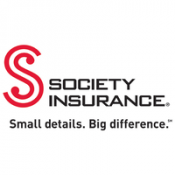Summer Safety Safeguards Every Restaurant Should Know
3 Min Read By Society Insurance
From a guest perspective, summer means seasonal menus reflecting the summer bounty, a fired up meat-filled grill, and dining al fresco on expansive patios. From a restaurant owner’s perspective, it’s a lot more stressful with adding heat, outdoor dining and wet surfaces into the mix.
As we are cresting into peak summer, Society Insurance breaks down the need-to-know summer guide for restaurant owners including outdoor dining, working in the heat, and preventing summer slips and falls.
Outdoor Dining 101
Designing an exceptional outdoor dining environment goes well beyond aesthetic elements. Whether creating a brand new outdoor space or looking to upgrade your current one, it is advisable to plan the layout with both customers and employees in mind. The outdoors can provide a host of new challenges such as:
-
Weather conditions: Do you have an overhang to protect customers from rain? Do you have a rapid move-in plan should inclement weather suddenly appear? Is your patio properly maintained to account for precipitation?
-
Electrical equipment: Are your POS systems and lighting fixtures built to withstand outdoor conditions? Are all potential electrical contact areas properly protected?
-
Compliance: Are your outdoor dining layout, exits and entrances designed with disabled and the elderly in mind? Is your layout ADA compliant
Additionally, your outdoor dining area should have a level walking surface with no loose materials that could contribute to slip, trip, or falls. The location should be away from high vehicle traffic entrance/exits. Visible barriers, wheel stops and appropriate signs should be in place to notify the driver of the possibility of more pedestrian traffic. Walkways should be examined for cords or other obstructions that may lead to a slip, trip, and fall. As with indoor dining, the outdoor dining should be adequately illuminated to ensure customers and employees can safely navigate the area.
Preventing Heat Illnesses
The best form of protection is prevention. Employers should establish a complete heat illness prevention program which includes provisions for providing workers with water, rest and shade; modified work schedules as necessary; planning for emergencies along with training for workers about the symptoms of heat-related illnesses and their prevention; and monitoring workers for signs of illness. Encourage employees to:
-
Drink water every 15 minutes
-
Rest in the shade to cool down
-
Wear a hat and light-colored clothing
-
“Easy does it” on the first days of work in the heat
-
Be aware that water, concrete, and sand reflect the sun and can make it stronger.
OSHA has a nationwide Heat Illness Prevention Campaign to raise awareness and teach workers and employers about the dangers of working in hot weather. OSHA also has a smartphone app that allows users to enter the current temperature and humidity. It will calculate the heat index and provide a risk level. You can then select “precautions” and it will give you a list of actions you can take, based on the current risk level. It is also worthy to note that OSHA’s Heat Illness website and many of their resources are available en español.
Avoiding Summer Slips and Falls
Everyone knows to be careful during the winter months when there’s snow or ice on the ground. What people often neglect to consider is that hazards still exist in the summer months, both indoors and outdoors. In fact, it’s the element of surprise that can make summer slips, trips and falls more severe than those that occur in winter.
Take a morning to review potential problem areas, paying close attention to:
-
Any defects in hard surfaces or loose carpet seams are major red flags. Even seemingly innocuous cracks or strings can trip someone up, resulting in serious injury. If there are defects in any flooring, replace it as soon as possible
-
Poorly lit stairwells are an accident waiting to happen. Add lighting as needed and change burnt out light bulbs immediately
-
There should be regularly dried walk-off mats by all doors, and any curled edges on mats should be straightened. If the mats are unable to be straightened, the mats should be replaced
-
If mops and wet floor signs aren’t readily available, that’s another problem. Conversely, the overuse of wet floor signs is also a problem. If a wet floor sign is out 100 percent of the time, odds are that patrons will ignore the sign when a real hazard does exist
-
Signage should be used to identify all changes in elevation, such as raised booths or dining rooms. Additionally, employees should be trained to point out these hazards.
This information is provided as a convenience, and it must not be assumed that it has detected all unsafe acts or conditions. This information is not professional advice; it is designed to assist you in recognizing potential safe work problems and not to establish compliance with any law, rule or regulation.


